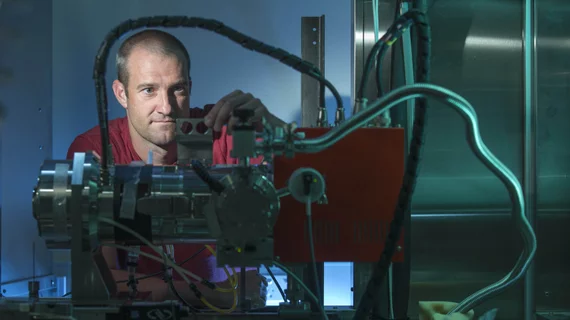New technique could make medical imaging safer, more affordable
Could safer, more affordable diagnostic screening be on the horizon? A new study led by researchers from Australian National University (ANU) in Canberra, Australia, could be a real game-changer for 3D medical imaging.
Led by Andrew Kingston, PhD, of the ANU Research School of Physics and Engineering, the researchers have found a promising way to lower x-ray doses and make screening for early signs of disease less costly. They call it "ghost imaging."
The technique involves taking 3D x-ray images of the interior of an object that is “opaque,” or cloudy and blurred to visible light.
"The beauty of using the ghost imaging technique for 3D imaging is that most of the x-ray dose is not even directed towards the object you want to capture—that's the ghostly nature of what we're doing,” Kingston said in a prepared statement released by ANU. "There's great potential to significantly lower doses of x-rays in medical imaging with 3D ghost imaging and to really improve early detection of diseases like breast cancer."
Kingston and colleagues’ method does not require an x-ray camera; it only uses a sensor, making the entire process cost efficient.
The researchers developed their ghost imaging measurement system using multiple x-ray beams with patterns. The beams were then split into two separate, but identical identical beams.
“The pattern was recorded in the primary beam, which acted as a reference since it never passed through the object that the researchers were imaging,” according to the statement. “The secondary beam passed through the object, with only the total x-ray transmission measured by a single sensor.”
Using the beam measurements, the researchers created 2D x-ray images of the object and they repeated this process to conduct the final 3D image.
"Our most important innovation is to extend this 2D concept to achieve 3D imaging of the interior of objects that are opaque to visible light," Kingston said. "3D X-ray ghost imaging, or ghost tomography, is a completely new field, so there's an opportunity for the scientific community and industry to work together to explore and develop this exciting innovation."

